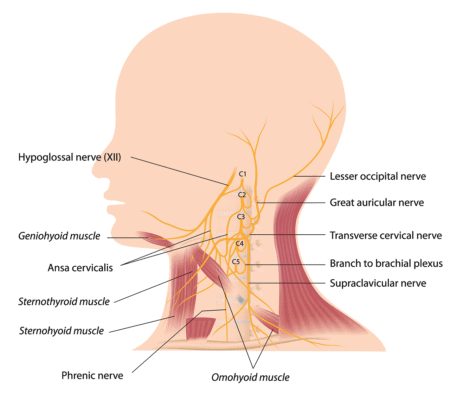To effectively manage head and neck pain, medical science continues to explore both traditional and innovative approaches. One area gaining attention is the potential role of the superficial cervical plexus (SCP) in providing relief for sufferers. This exploration is rooted in a deeper understanding of the anatomy involved, the types of pain experienced by patients, and the therapeutic techniques that can target this nerve network. Could the SCP be the key to unlocking a new dimension of pain relief?

Understanding the Superficial Cervical Plexus
The SCP is a network of nerves in the neck that provides sensory innervation to the skin of the neck, the upper chest, and portions of the head. It is composed of branches from the cervical nerves C1 to C4. Due to its extensive coverage, the SCP is a prime target for interventions aimed at alleviating pain in these areas.
Types of Head and Neck Pain
Head and neck pain can arise from various causes, including tension headaches, migraine, cervical spondylosis, and postural stress. The complexity of the cervical region, with its intricate interplay of nerves, muscles, and vertebrae, makes it a common source of discomfort for many individuals.
Therapeutic Techniques Targeting the SCP
Nerve Blocks
One of the most direct methods of targeting the SCP for pain relief is through nerve blocks, where a local anesthetic is injected near the nerves to temporarily interrupt pain signals. This technique can provide rapid relief for acute pain episodes and is often used diagnostically to confirm the source of pain.
Physical Therapy
Physical therapy interventions, including exercises and manual therapies aimed at improving posture and muscle function, can indirectly benefit the SCP by relieving mechanical stress and tension in the neck region.
Acupuncture
Acupuncture involves the insertion of fine needles into specific points on the body to relieve pain and improve well-being. Some acupuncture points correspond to the anatomical location of the SCP, suggesting that this traditional technique may exert its effects, in part, by modulating SCP function.
Neuromodulation
Advancements in neuromodulation techniques, such as transcutaneous electrical nerve stimulation (TENS) and peripheral nerve stimulation, offer non-invasive ways to alter nerve activity and pain perception. By targeting the SCP region, these methods hold promise for chronic pain management.
The Evidence and Future Directions
While there is anecdotal and preliminary clinical evidence supporting the role of the SCP in head and neck pain relief, rigorous research is needed to fully understand its potential. Future studies should aim to clarify the mechanisms by which SCP-targeted therapies exert their effects, identify the patient populations most likely to benefit, and optimize treatment protocols for sustained pain relief.
Moreover, as our understanding of the SCP’s role in pain pathways deepens, there may be opportunities to develop novel therapeutic approaches that harness its potential more effectively. This could include combining SCP-targeted interventions with systemic treatments or leveraging emerging technologies for precision medicine.
Conclusion
The journey towards understanding and effectively treating head and neck pain is ongoing, with the superficial cervical plexus emerging as a promising area of focus. While further research is essential, the current body of knowledge suggests that therapies targeting the SCP could offer significant relief for many sufferers. As we continue to unlock the mysteries of the human body, the SCP may indeed prove to be a key player in the battle against pain.








